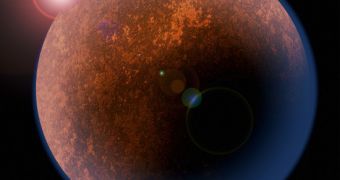People do dress rehearsals for weddings, so it's no wonder scientists are running loads of simulations before finally deciding to pick and choose between several daredevils and send them to the Red Planet.
A mock Mars mission scheduled to last 120 days debuted in Hawaii several months ago, in mid-April. Should things go as planned, the mission will reach its end this coming August 13.
Space informs us that the mission, dubbed The Hawaii Space Exploration Analog and Simulation, was intended to allow 6 people to live for a considerable period of time in Mars-like conditions.
Thus, the Mars explorer wannabes who had agreed to take part in it were sent on the northern slope of Mauna Loa, one of the five volcanoes that form the Island of Hawaii.
The habitat these people are presently living in is located some 8,000 feet (2,440 meters) above sea level. What's more, it is no more and no less than a barren lava field.
Hence the fact that the volunteers have virtually no difficulties pretending that they are actually on Mars, Space explains.
Since they've been living in these conditions, the researchers have really gotten into character. Thus, not only have they gone out in the field wearing simulated spacesuits, but they have also eaten only foods believed able to resist in a long voyage to Mars.
One can only assume pizza, hamburgers, and freshly squeezed orange juice were not on the menu.
The same source informs us that, as part of this mock Mars mission, the volunteers have conducted a series of scientific experiments.
Data collected in this manner is expected to help researchers better plan real missions that might be conducted at some point in the future.
“We're here to experiment and figure out what works and doesn't work,” Commander Angelo Vermeulen reportedly told Astrobiology Magazine editor Leslie Mullen in an e-mail interview.
“We're mostly trying to churn out as much data and results as we can. We all want to generate a nice stack of scientific papers after this mission,” he added.

 14 DAY TRIAL //
14 DAY TRIAL //